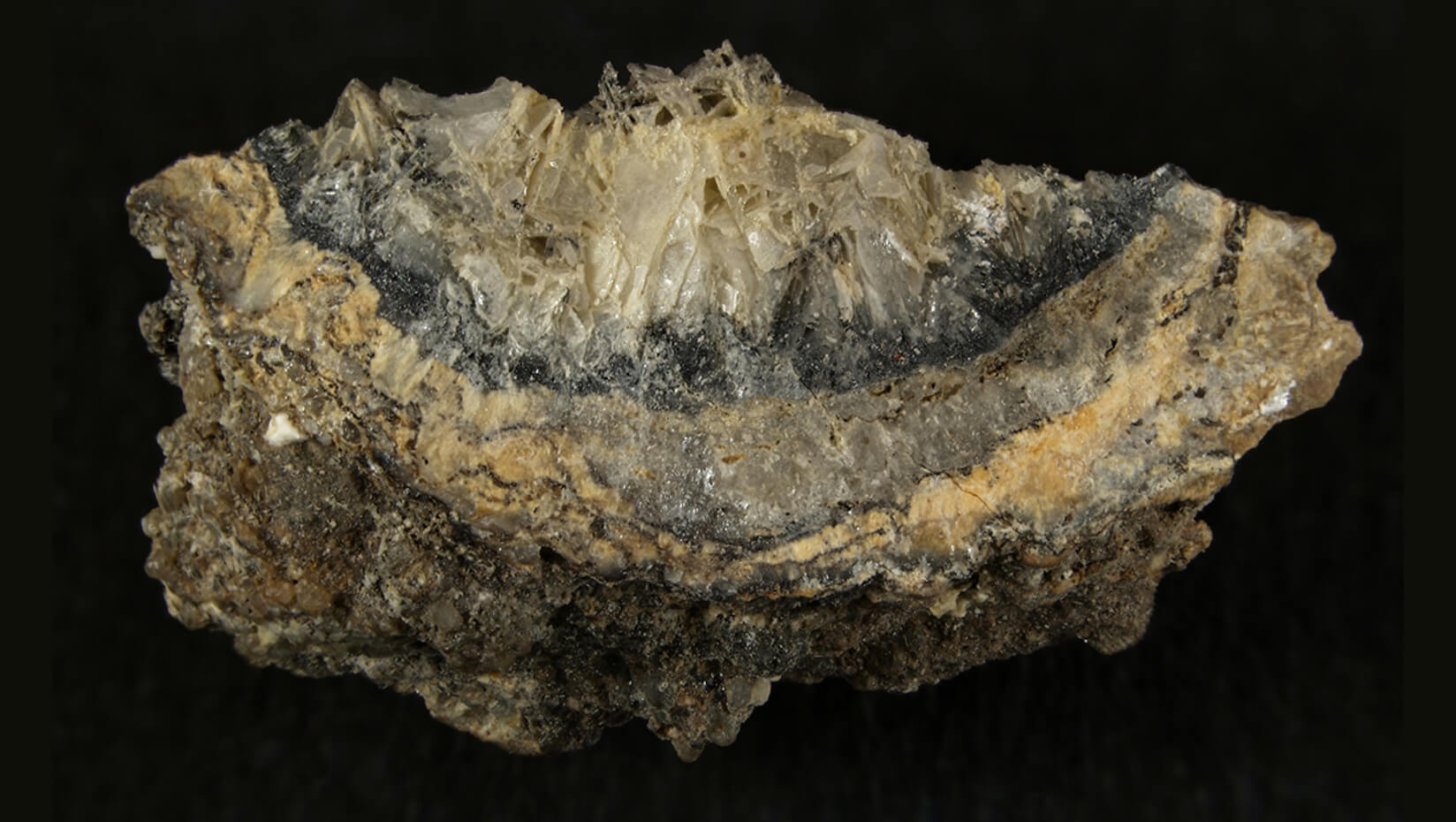
Anthropocene mineralogy and the dawn of a new geological epoch
There are roughly 5,200 officially recognized minerals on planet Earth according to the International Mineralogical Association (IMA). Two of which — Edgrewite and hydroxyledgrewite — are named after University of Maine mineralogist and petrologist Edward Grew.
Grew, a research professor in the School of Earth and Climate Sciences, has studied and helped discover new minerals from five continents, from Antarctica to Australia to Europe, particularly those containing of the elements Boron and Beryllium.
Most recently, he has helped to identify and catalog, for the first time, a group of 208 mineral species that formed either principally or exclusively through human activities.
The research, a collaboration led by Robert Hazen of the Carnegie Institution for Science and including Marcus Origlieri and Robert Downs of the University of Arizona, suggests that humans have done more to increase the diversity of minerals on Earth than any other agent since the Great Oxidation Event impacted our planet over 2.2 billion years ago.
As defined by the IMA, a mineral is a naturally occurring inorganic crystalline substance formed purely through geological processes. “In other words, they are completely naturally made materials,” says Grew.
However, lying just outside of this definition is a rapidly growing group of synthetic mineral-like substances as well as minerals that owe their existence to human activity, many of which are not formally recognized as minerals by the IMA.
“You’d think there would be a hard and fast distinction between these categories of minerals, those natural and those human-made, but there isn’t,” says Grew. “And as a result, many exist in this sort of grey area of human-mediated minerals.”
Humans did not directly create these human-mediated minerals, but rather helped shape the environments and conditions under which they were formed.
“When you open a mine you impact the environment, you disturb the geology, the chemistry, you change the flowage of water and the exposure to air, and you end up making minerals not intentionally, but inadvertently,” says Grew.
Many of the 208 minerals listed in the new paper published by American Mineralogist, the flagship journal of the Mineralogical Society of America, are attributed to human activities related to mining. For example, the weathering of slag or the exposures of mine tunnel walls. Others are attributed to industrial environments, such as those discovered on the walls of smelters or geothermal pipe systems.
A few were even found in association with archaeological materials. Three were discovered on lead artifacts recovered from a Late-Hellenistic shipwreck in Tunisia.
“One of the new questions we are facing is how we deal with all these new minerals and mineral like substances,” says Grew.
Not only are humans creating new environments and opportunity for new minerals to form, we are extracting, redistributing and aggregating natural minerals from across the globe to places far from where they formed naturally at a rate and magnitude rivaling the most powerful geological processes.
“Consider the idea of finding a tourmaline crystal in western Maine and bringing it back to your house,” says Grew. “You’re moving a mineral from a place it was naturally formed to a place it would have never existed.”
Even the smallest mineral collections juxtapose species that would never occur together naturally in a single location. At the global scale, humans have been doing this for thousands of years.
The research touches at the philosophical understandings of what defines a mineral and warrants a more comprehensive understanding of what the authors refer to as “Anthropocene mineralogy”.
The deep antiquity of our planet — a history spanning 4.57 billion years — is divided into a number of geological time intervals. Each interval is broadly defined by the planetary conditions of the time and their succession to the present is evidenced by marked changes in climate and by the deposition of different geological layers, or strata, that underlie the landscapes we live in today. Many intervals are bookended by global geological, climate or paleontological events, like glaciations, cosmic collisions or mass extinctions.
Currently we reside in the Holocene Epoch, a period of time that began about 11,700 years ago following the end of the last glacial period, however there is a growing interest in the formal recognition of an Anthropocene Epoch — a new geologic interval defined by human activity as the dominant influence on the environment, climate and geology of Earth.
This research is helping define the mineralogical criteria of a possible Anthropocene Epoch and to better understand how the signature of our tenure on Earth will be preserved in the geological record for epochs to come.
“It is very clear that the human-mediated minerals have added a lot to the diversity of minerals as a whole,” says Grew.
“And there is a certain irony in this because in terms of biological diversity, human impact is destroying species, however in the realm of mineralogy, were creating new species and it is increasing diversity.”
Both of which are occurring at an astounding rate.
The full release is available online.
Contact: Walter Beckwith, 207.581.3729
